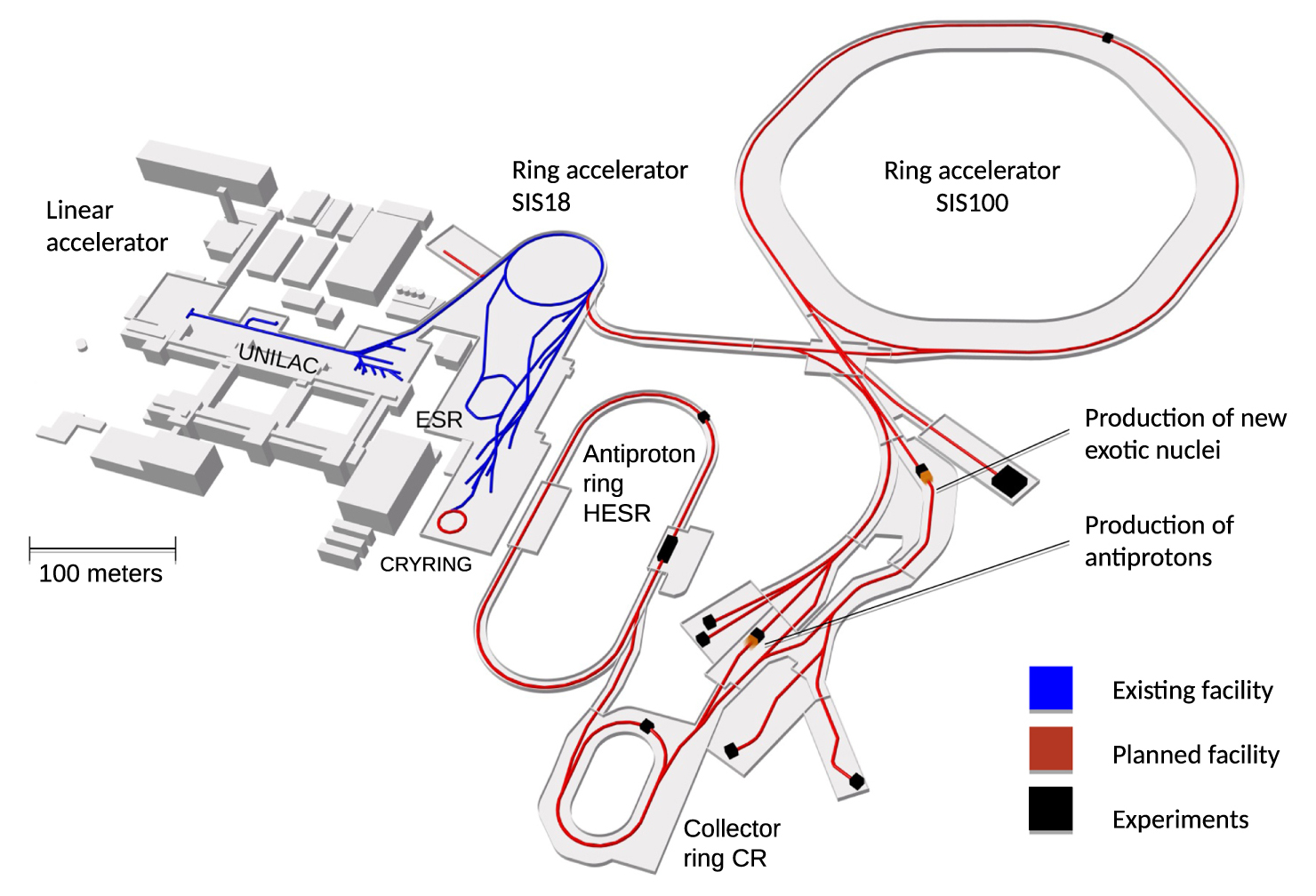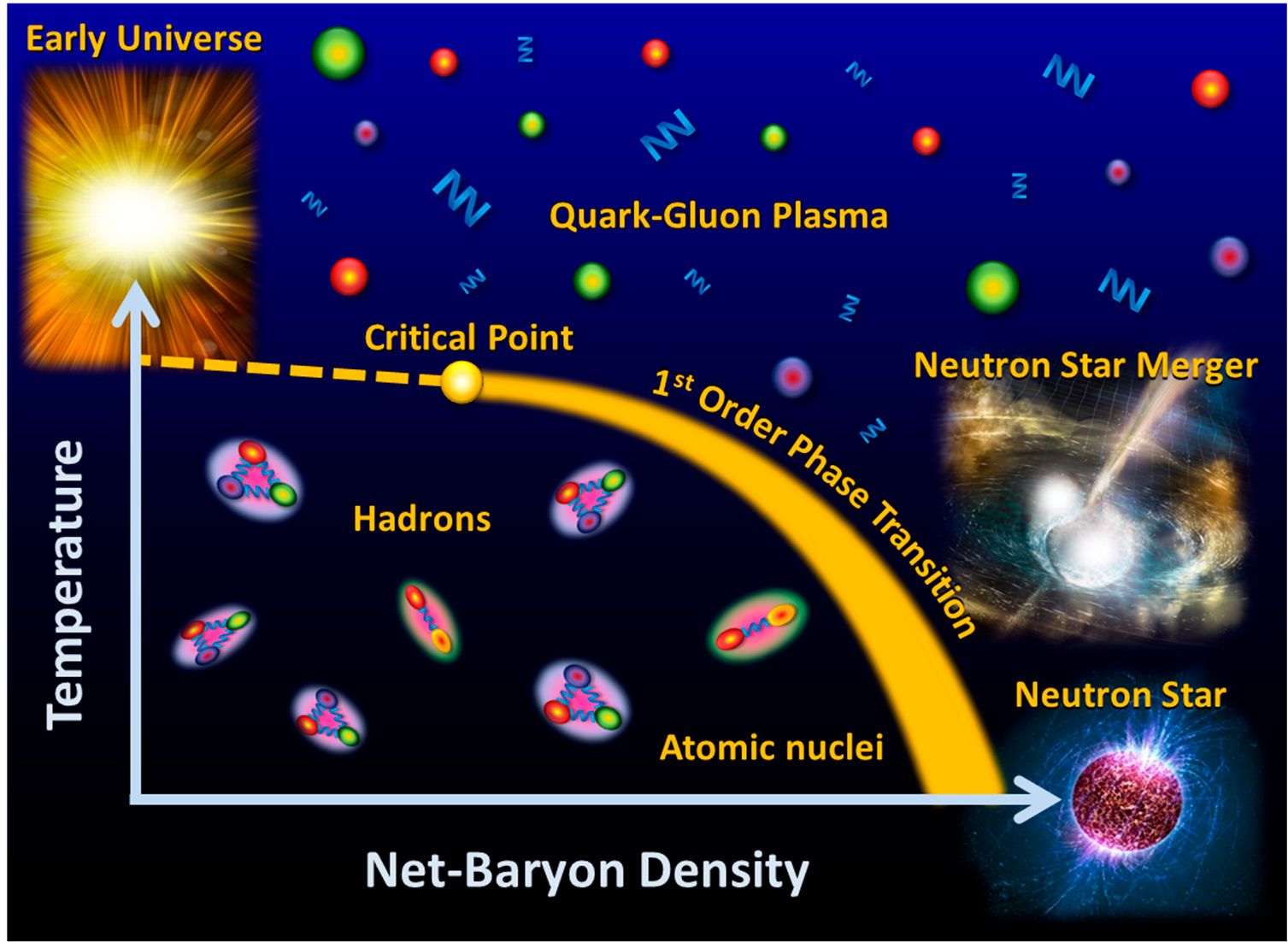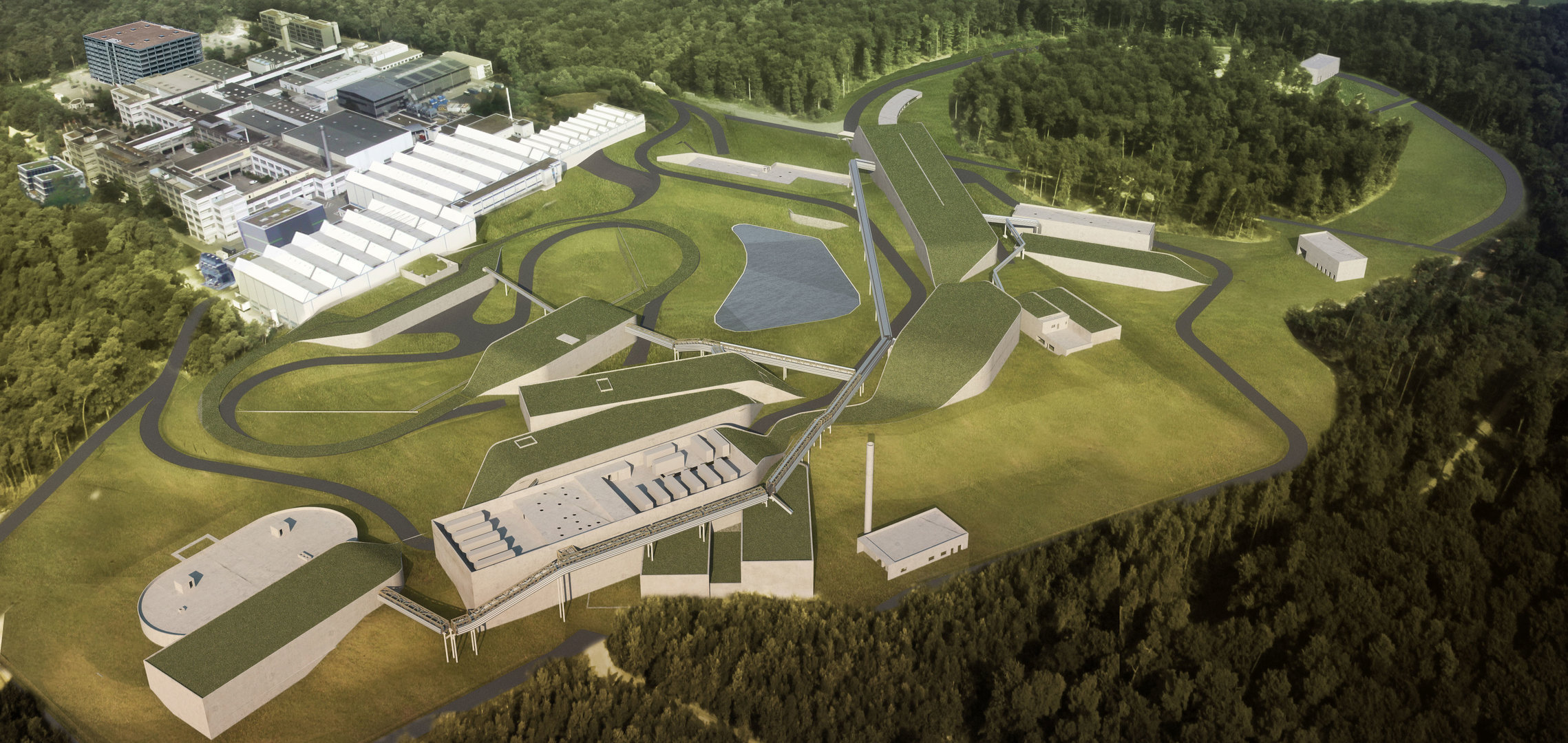 |
 |
 |
The discovery of the atomic nucleus more than a century ago can be considered the beginning of one of the greatest scientific projects in human history - the study of nuclear matter and the forces that act within it. Since that time, many discoveries have been made that have radically changed our view of the world around us and the principles of its functioning at the most elementary level. However, many of the key phenomena associated with the strong interaction have not yet been understood, particularly in areas that involve more complex structures and high densities.
Some of the fundamental unanswered questions include:
- How does the complex structure of matter at all levels arise from the basic constituents and basic interactions? In particular, how can the structure of hadronic matter be derived from the strong interaction, and why do hadrons, the bound states of quarks, have the properties (e.g., mass) that we observe?
- What is the structure of matter at the extreme temperatures and densities found in astrophysical objects? What does the equation of state of nuclear matter look like and are there different phases and phase transitions?
- What was the evolution and composition of matter in the early universe?
Our research group at the Faculty of Nuclear and Physical Engineering is trying to answer these extremely interesting and important questions by working on the CBM (Compressed Baryonic Matter) experiment at the GSI labboratory.
The GSI (Helmholtzzentrum für Schwerionenforschung) is Germany's leading laboratory near Darmstadt, where both basic and applied research related to nuclear physics has been conducted since 1969. One of the largest particle accelerator complexes and experimental facilities in the world, the Facility for Antiproton and Ion Research (FAIR), is currently under construction at the GSI. Under this project, a total of 3.5 kilometers of tunnels with eight accelerator and collection rings are planned to be built over an area of 20 hectares.
At the heart of the complex is the 1.1 km long superconducting heavy ion accelerator SIS100. This accelerator will not be the best in the world in terms of the maximum energies to which it can accelerate particles; it does not, for example, rival the largest LHC accelerator at CERN, but has been specifically developed to produce incomparably more intense beams of essentially any atomic nuclei.
The CBM experiment will detect a wide range of particles that are produced by collisions of SIS100 primary accelerator beam nuclei with target nuclei. Due to the beam intensity, the detector design and the speed of the readout electronics, up to ten million such collisions per second will be detected and reconstructed. At the collision energies that will be achievable within FAIR, hot nuclear matter will be produced, compressed to more than twice the normal density of an atomic nucleus. It is thought that in nature, similarly extreme pressures and densities may occur inside neutron stars or in their collisions, which have recently been observed using gravitational waves. Knowledge of the behavior, i.e. the equation of state, of nuclear matter is therefore crucial to explain the stability of neutron stars or to describe the behavior of supernova explosions.
At the extreme pressures and densities that exist inside very massive neutron stars, a phase transition can even occur, releasing quarks that are normally bound inside protons and neutrons. The nuclear matter thus transitions to a so-called quark-gluon plasma. In the very early universe (about 10 microseconds after the Big Bang), matter is thought to have existed as a very hot quark-gluon plasma. For a record, such a hot plasma can be achieved in nuclear collisions at the LHC at CERN. Inside neutron stars, on the other hand, there should be a relatively cool quark-gluon plasma, which can be created in nuclear collisions at the CBM experiment. This state of matter exists only for a very brief moment after the collision of nuclei. The subsequent expansion and cooling of matter leads to a reverse phase transition from a quark-gluon plasma to hadronic gas. In the case of collision energies at SIS100, a very dramatic phase transition of the first kind is expected, similar to the phase transition of water between the gaseous and liquid states. In this way, the phase diagram of nuclear matter can be studied using nuclear collisions.
Similar to water, nuclear matter can exhibit different properties depending on which part of the phase diagram we are in. These many-particle manifestations are very difficult to predict accurately directly from fundamental strong interaction theory, similar to the electromagnetic interaction that determines the properties of solids. Thus, for example, one can expect the existence of a critical point in the phase diagram or even the existence of exotic phases that behave similarly to superconductors. Confirming and investigating such phenomena in detail is crucial for a better understanding of the behaviour of the strong interaction. For example, it will allow us to find out what was happening in the early stages of the evolution of the universe. The experimental search for signatures related to these phenomena is the main focus of the CBM experiment.
Currently, as a result of the Russian invasion on Ukraine, all involvement of all Russina institutes at CBM was revoked. As a direct consequence project of development of forward calorimeter for the CBM experiment was stopped and effectively terminated. It is clear that a new forward detector must be build which will be able to fulfill the main tasks of centrality and event plane measurements. At the same time the detector must be available for day-1 of the CBM data taking. For this reasons we proposed and now lead the development of new Forward Spectator Detector - a scintillator hodoscope with readout based on silicon photomultipliers (SiPM). The first studies on physics performance and and electronics design started in fall of 2022. Given the schedule of the FAIR facility construction, the first beams of accelerated nuclei for scientific research are expected in 2027 by which the new detector must be delivered.


